Magnus Carlsen, the world champion, has added yet another tournament to his extensive list of victories. Although he must have been annoyed to incur a rare loss against Hikaru Nakamura in the first round, Carlsen then scythed through the field to emerge ahead by a substantial margin. Bilbao was one of those events where the organisers chose to award three points for a win, one for a draw and nothing for a loss. The final scores were: Carlsen 17, Nakamura 12, So and Wei Yi 11, Karjakin 9 and Giri 7.
The fact that Sergey Karjakin, who has qualified to challenge Magnus Carlsen for his world title, and Anish Giri, who went through the Candidates tournament without a single loss, should have ended up in the bottom two slots, is a powerful indicator of the overall strength of this competition.
Last week I published Carlsen’s win against Karjakin while this week I show how he overcame the normally super-solid Giri.
Carlsen-Giri: Bilbao Masters 2016; London System
1 d4 d5 2 Bf4 Seemingly unpretentious. Indeed, allowing Black to develop his own queen’s bishop on f5 without repercussions indicates an entire absence of ambition by White in this opening. However, as is well known, Carlsen rarely strives for any kind of theoretical advantage in the opening stages. 2 … Bf5 3 e3 e6 4 Bd3 Bxd3 5 Qxd3 This position, with the early trade of bishops, would usually be regarded as sterile. Carlsen, though, in the style of his role model Emanuel Lasker finds ways to maintain the tension. 5 … c6 6 Nd2 Nf6 7 Ngf3 Be7 8 0-0 0-0 9 h3 Nbd7 10 a4 c5 11 a5 c4 12 Qe2 b5 13 axb6 axb6 14 Ne5 Nxe5 15 dxe5 Carlsen starts to take risks. The alternative capture 15 Bxe5 is completely level. 15 … Nd7 16 Qg4 Re8 17 h4 f5 Shoring up his defences. The cautious Giri avoids 17 … Rxa1 18 Rxa1 Bxh4 19 e4 which is by no means clear. 18 Qh3 Rxa1 19 Rxa1 c3 Instead of offering a pawn Black should now seize one. After 19 … Bxh4 20 g4 White will be hard-pressed to justify his ambitious play. 20 bxc3 Qc7 21 c4 Nxe5 Uncharacteristically, Giri also starts to take risks. This could have cost him dear. 21 … dxc4 is safe and sound. 22 Qg3 Bd6 (see diagram 1) 22 … Bf6 fails to 23 Kh1 followed by Nf3. 23 cxd5 White misses a win with 23 c5!! bxc5 24 Ra6 when there is no defence to 25 Rxd6 and Bxe5. 23 … exd5 24 Nb3 Qxc2 25 Nd4 Qc8 26 h5 Qd7 27 Rb1 Bc7 28 f3 Qf7 29 Ra1 Bd6 30 Ra6 Qxh5 31 Rxb6 Nc4 32 Rxd6 Nxd6 33 Bxd6 Rxe3 34 Be5 Qg6 35 Qf4 Re1+ 36 Kf2 Ra1 37 Qd2 Ra8 (see diagram 2) A blunder. 37 … Qa6 should hold. 38 Nxf5 Qe6 Of course 38 … Qxf5 fails to 39 Qxd5+. 39 Qg5 g6 40 Nh6+ Kf8 41 Ng4 Ke8 42 Nf6+ Kf7 43 Nxh7 Ra4 44 Qd8 Ra2+ 45 Kg1 Black resigns After 45 … Qxe5 46 Qf8+ Ke6 47 Qe8+ Kd6 48 Qb8+ Ke6 49 Nf8+ Kf5 50 g4+ followed by a knight fork wins the queen.
Got something to add? Join the discussion and comment below.
Get 10 issues for just $10
Subscribe to The Spectator Australia today for the next 10 magazine issues, plus full online access, for just $10.

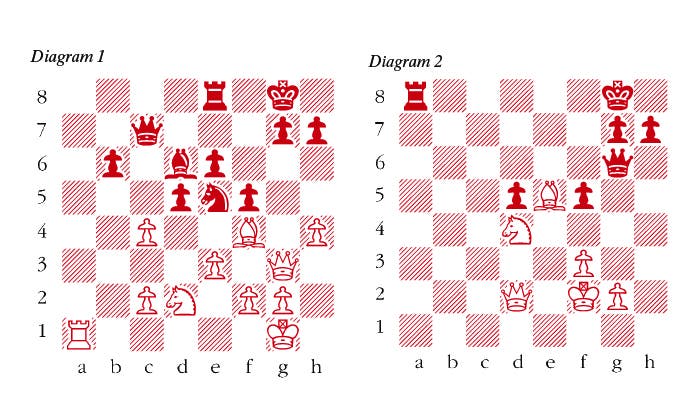
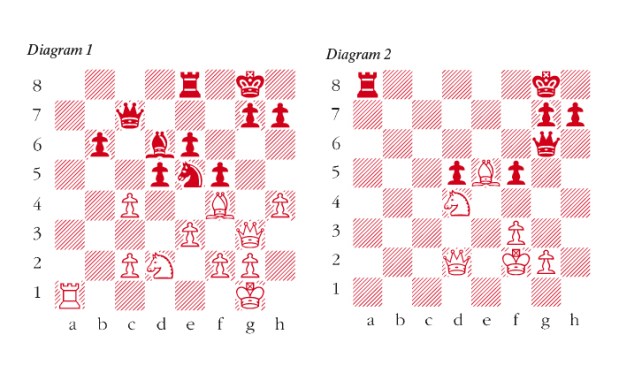
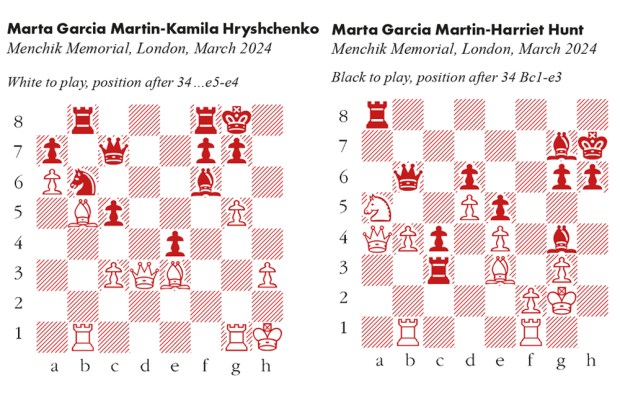

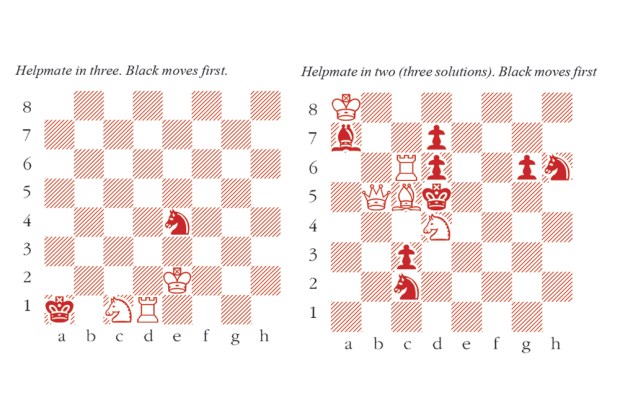
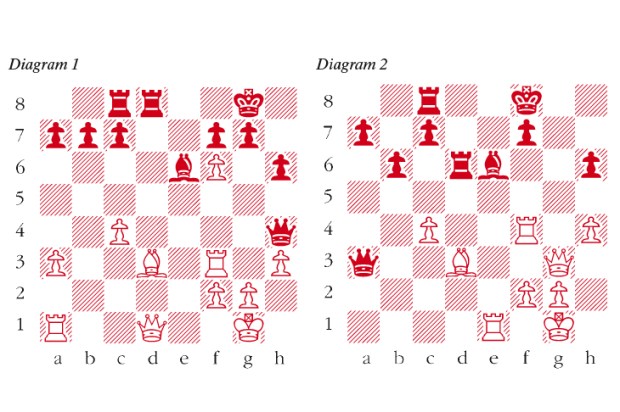
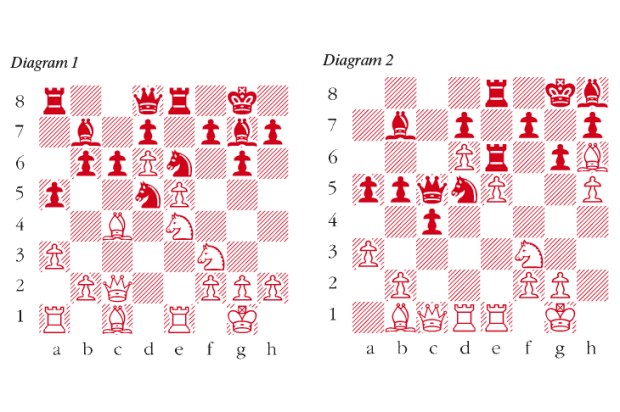






Comments
Don't miss out
Join the conversation with other Spectator Australia readers. Subscribe to leave a comment.
SUBSCRIBEAlready a subscriber? Log in